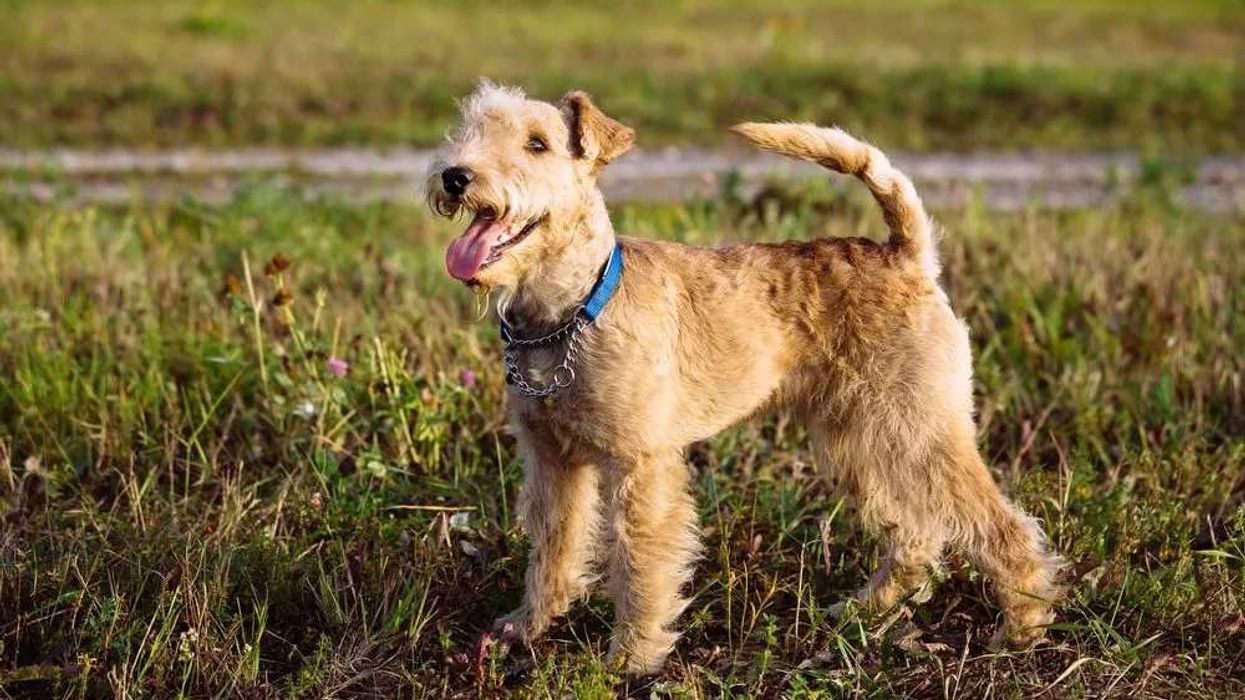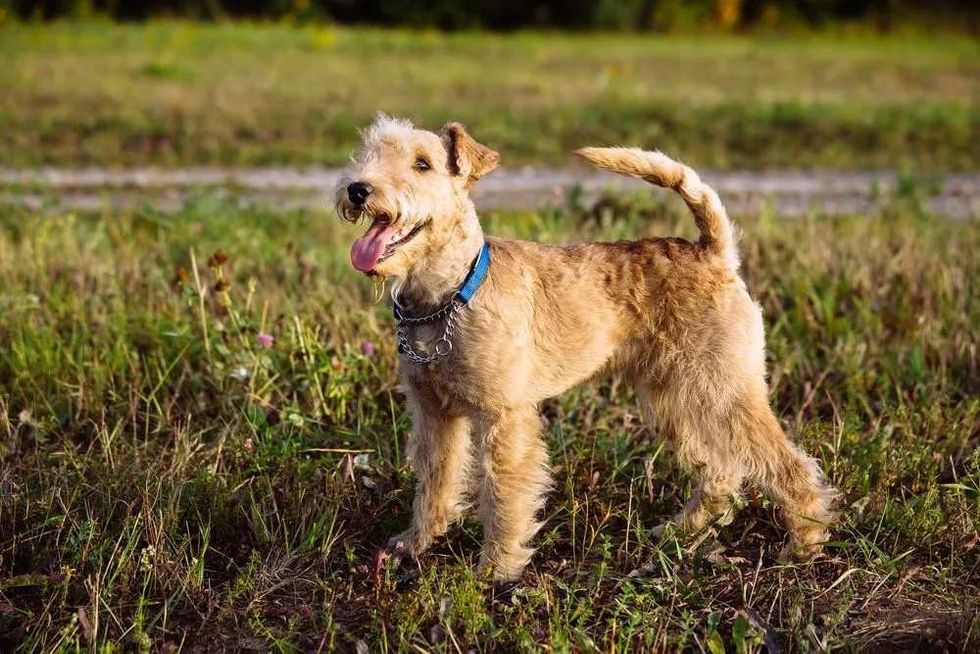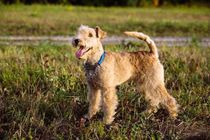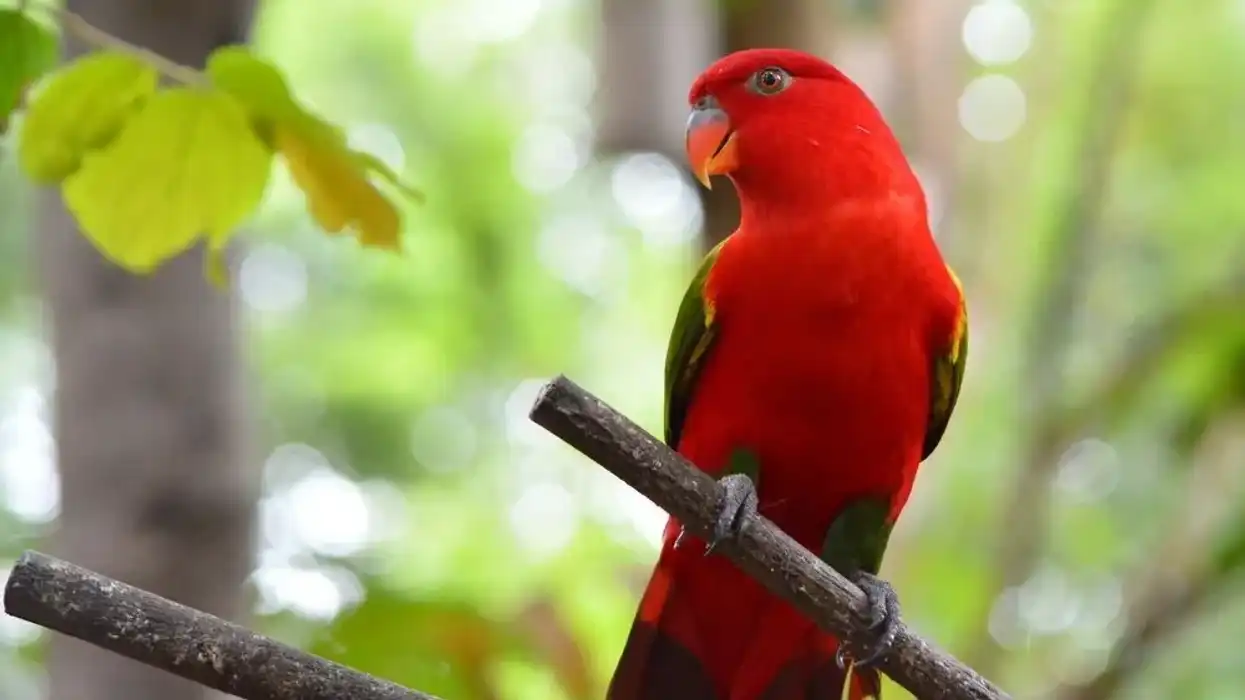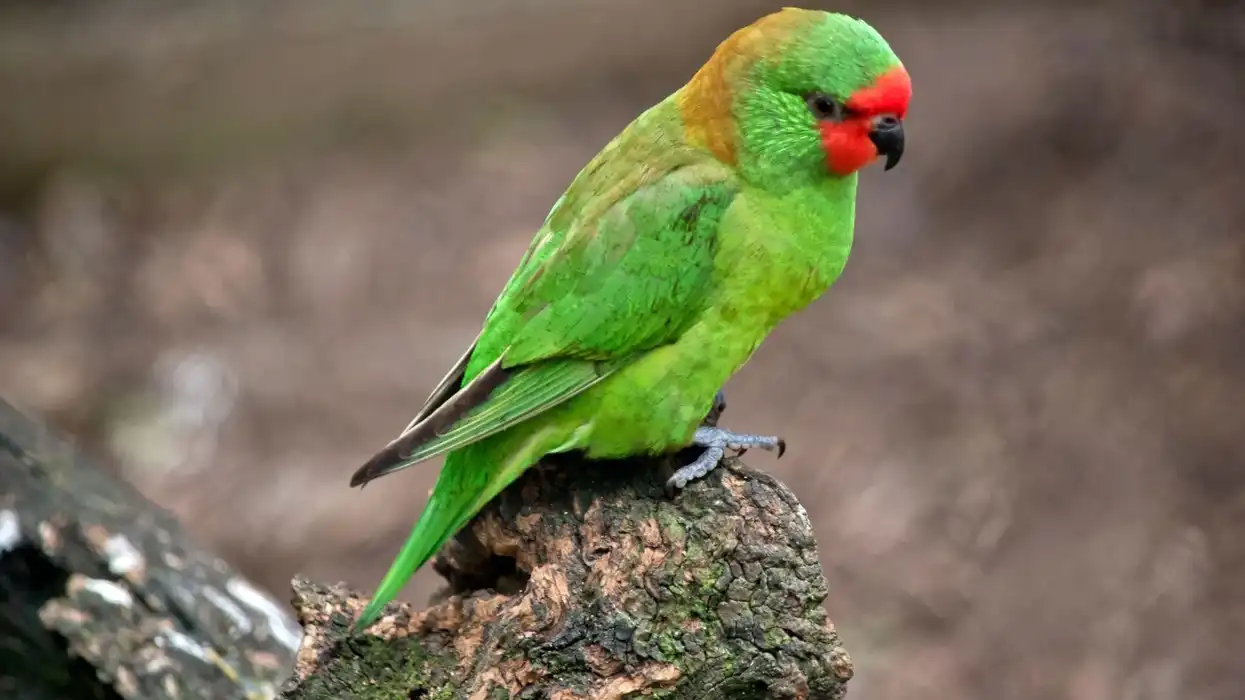Fun Lakeland Terrier Facts For Kids

Content
- What type of animal is a Lakeland Terrier?
- What class of animal does a Lakeland Terrier belong to?
- How many Lakeland Terriers are there in the world?
- Where does a Lakeland Terrier live?
- What is a Lakeland Terrier's habitat?
- Who do Lakeland Terriers live with?
- How long does a Lakeland Terrier live?
- How do they reproduce?
- What is their conservation status?
- What do Lakeland Terriers look like?
- How cute are they?
- How do they communicate?
- How big is a Lakeland Terrier?
- How fast can a Lakeland Terrier run?
- How much does a Lakeland Terrier weigh?
- What are their male and female names of the species?
- What would you call a baby Lakeland Terrier?
- What do they eat?
- Are they hypoallergenic?
- Would they make a good pet?
- Did you know...
- Who bred the first Lakeland Terrier?
- Having your own Lakeland Terrier
Lakeland terriers are also popularly referred to as 'lakies' and originate from the Lake District region in Northern England in the year 1800, from where their name is inspired.
Farmers and hunters bred the dog to help them out in hunting and killing foxes as they were easily able to squeeze into small places and kill things that could cause trouble to the farm by protecting herd animals.
This dog breed also began to be given as gifts to hunters at one point in time and later began to be adopted as pets in homes.
These dogs are native to Europe and are also present in other parts of the world like the United States. They are active dogs and love being involved in some or the other forms of activity.
The Lakeland terrier ranks 147 of 197 in terms of popularity ranking as per the American Kennel Club (AKC) popularity index and creates the right impression in a show ring.
In this article, you will find some fun and interesting facts and information about those affectionate and feisty dog breeds.
Breeds of terriers include the blue Lakeland terrier, red lakeland terrier, and black lakeland terrier all of which are medium-sized dogs. Read on to learn more, and if you like this then visit Glen of Imaal terrier and Brazilian terrier facts too.
Lakeland Terrier Interesting Facts
What type of animal is a Lakeland Terrier?
A Lakeland terrier is a type of dog that is smart and lively in nature and was once a farm dog.
What class of animal does a Lakeland Terrier belong to?
Lakeland terriers belong to the class of mammal and are purebred dogs. Lakeland terrier colors are wheaten, blue, black and tan, and red grizzled.
How many Lakeland Terriers are there in the world?
The exact number of this species is unknown. As per records, there are 30 types of terrier species according to the American Kennel Club and some of them look similar to each other.
The United Kennel Club recognizes there to be 44 types. A few include the Welsh terrier, Glen of Imaal terrier, and the Airedale terrier among others.
Lakeland terrier vs Welsh terrier is more or less similar since they belong to the same family of species but the Welsh originates in Wales and weighs more than the Lakeland terrier size.
Another one is Lakeland terrier vs Airedale terrier which are also similar in appearance however the latter is more affectionate in nature as compared to the prior. Lakeland terrier temperament is slightly livelier.
Where does a Lakeland Terrier live?
A Lakeland terrier is known to be a farm dog and was originally bred to stop pests from infecting crops. However, years later it was adopted as pets in homes and is also found living in pet stores, shelter homes, or in rescue groups.
What is a Lakeland Terrier's habitat?
These dogs are adaptable to living in homes as well as apartments. If kept in outdoor homes it's essential to train them as they can go wandering off if they find pest animals like rats or other insects since it was primarily created as a farm dog to protect farm animals and chase pests away.
Experienced pet owners will be able to easily train these dogs as good home pets and set boundaries with them.
They love outdoor activity and are playful in nature so toys to fetch and a place to sleep and eat will suffice. These dogs once trained are a wonderful companion to a family.
Who do Lakeland Terriers live with?
Lakeland terriers fit in perfectly with people i.e. a family or an individual in an apartment.
While other dogs are protective of their territories, owners and do not always welcome other guests or strangers, terriers adapt and live comfortably with people including kids and adults. They take some time to adapt to other dogs but it's possible to do this.
They can even live with cats which is a surprising factor considering that cats and dogs are considered unlikely friends to be together.
How long does a Lakeland Terrier live?
Lakeland terrier life span is a minimum of 12 years and a maximum of 15 years. At 16 years the Lakeland terrier is considered to be equivalent to 83 years in human age and such a dog is considered as a Matusalem dog.
How do they reproduce?
The dogs were first bred in order to hunt and kill foxes. Adult Lakeland males and females usually mate and since these are purebred species they likely pass on the same genetic matter onto their future generations.
The bitch dog whelps five days prior to giving birth to puppies which is usually 58 days post-mating. This is an appropriate time to consult a vet if you own the female of the species.
The females then give birth to three to five puppies in one litter. In most instances, the puppies are only kept with their mothers for the initial few weeks and then transferred into a separate place.
What is their conservation status?
Smooth-haired Lakeland terrier is a dog that is considered as a Not Evaluated species by the International Union For Conservation Of Nature (IUCN) and is a popular choice for adoption as a pet both for experienced owners as well as others.
Lakeland Terrier Fun Facts
What do Lakeland Terriers look like?
The Lakeland is a medium-sized dog that has a double coat including a soft undercoat and a wiry outer coat with short hair. The hair needs to be groomed on regular basis. Their ears are v-shaped ears.
They have a rectangular head. They have small eyes which are dark in color and usually oval-shaped. The pad of their feet and nose pads are dark in color as well.
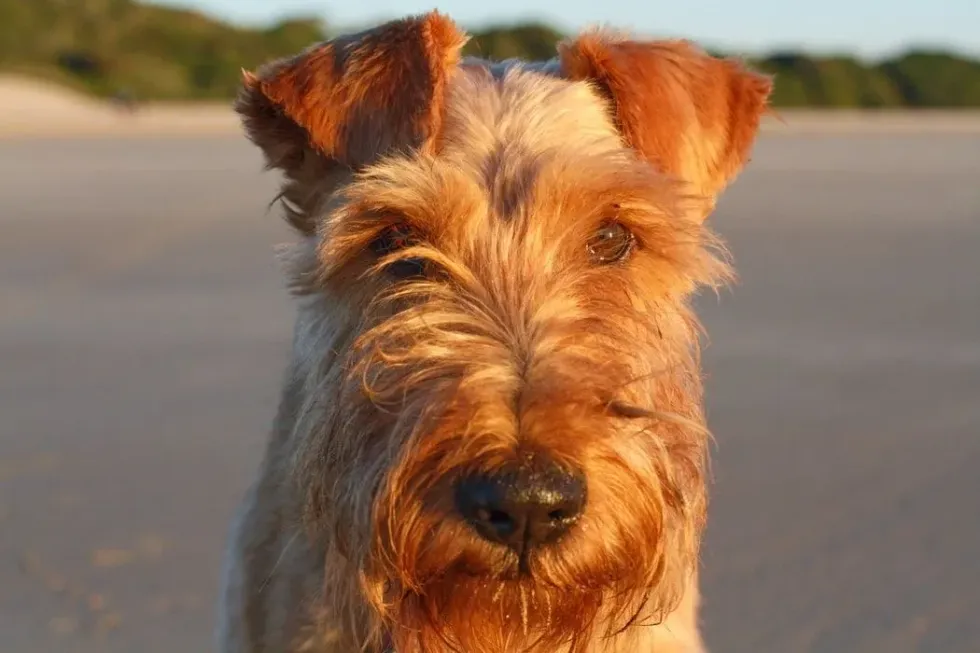
How cute are they?
Lakeland terriers are extremely cute because of their playful nature, as well as being friendly dogs, and even though they have been known to have some temperament issues they can be controlled through training from birth. Their shape and size make them accommodating for a small space and are a cute dog breed to be around.
Lakeland terrier puppies are specifically cute and adorable.
How do they communicate?
As pets, they always look amused and are alert beings. Lakelands love to play games like fetch and love to interact with their owners. These terriers also make use of barking when needed and are relatively loud when they need be.
How big is a Lakeland Terrier?
The Lakeland terrier size is 13-14 in tall which is five times bigger than the tiniest dog breed in the world, the Chihuahua who is six to nine inches as an adult on average.
How fast can a Lakeland Terrier run?
Lakeland terriers have moderately long legs and can run at good speeds. A Lakeland terrier named Stingray of Derryabah in Crufts dog show was the first dog to win a show in 1967. It was considered best in show.
How much does a Lakeland Terrier weigh?
A Lakeland terrier's weight is 15–17lb which is 7-8 kg. Their height is 13-14 in.
What are their male and female names of the species?
Female dogs are referred to as a bitch and male dogs are referred to as dogs themselves. Lakelands look similar to each other but differ in reproductive functions. If they are a pet they respond to names kept by the owners as well.
What would you call a baby Lakeland Terrier?
Baby Lakeland terriers originate from Lakelands and are referred to as Lakeland terrier puppy. It's essential to engage them in socialization when they are puppies since this ensures calmer adult dogs as a result.
When trained Lakelands learn to become social dogs and are a great companion to be around. It's essential to enquire about their history from the breeder to avoid any confusion of them being mixed or a pure breed and other details about their care.
What do they eat?
Dietary requirements include feeding the dog minimum of two times with food that contains nutritional value and is of good quality. They do not need to feed lots of food but appropriate proportions, consulting a professional about this is advisable to keep them in the best health.
Their diet should consist of quality food and water including chicken, salmon, turkey, or duck meat. Including taurine in their diet is also a good choice since it helps them maintain a healthy heart.
The diet should consist of good amounts of proteins and other nutrients like calcium, fat, and carbohydrates in appropriate amounts.
Fatty foods should be kept at a minimum as if fed too much it can create problems. They can also be fed kibble food but ensure that they have a substitute liquid to drink along with it.
Are they hypoallergenic?
If you want to know is Lakeland terrier hypoallergenic, the answer is yes. These terrier breeds also have a low propensity to drool. Lakeland terrier grooming needs to be regular, their short hair can be maintained and are perfect for people with allergies.
Would they make a good pet?
These terriers adapt to living in both apartments as well as bigger homes as long as they have a good environment around them. They can be left alone however leaving these pets away for long hours is not a good idea.
They tend to get possessive about their food and toys so they need training through socializing them. Always keep these pet terriers on a leash when taking them for a walk as they have a predatory instinct and can run instantly.
They require a healthy diet and exercise to avoid health problems. Grooming them is not difficult as compared to other dog breeds that are more fluffy, however, this does not eliminate the need for grooming.
They should be groomed regularly as per their growth.
Trimming their hair is simple but if you find it difficult you can visit a facility where they properly groom them. They love being outdoors and enjoy a game of fetch and other sports and exercise.
Taking care of them is simple as long as you are looking for a constant companion and have enough dedication to looking after them. Contacting breeders before adopting is a good choice to ensure you get all information about your pet puppy.
Did you know...
'Tintin' is a series that all children, as well as adults, love and admire. Snowy the famous dog in the 'Tintin' series was a wire fox terrier dog.
The caricature of the dog was used as the main character and appeared on the series of shows as well as comic series. The dog acts as comic relief throughout and is a breed of terrier similar to that of the Lakeland terrier breed.
These dogs love digging holes so if you have a garden make sure to protect it carefully. They are primarily watchdogs and have the habit of following particular scents or even wander off easily hence it's essential to be aware of where they are and what they are up to.
They are active dogs and love playing with toys. A dog named Waffle in Newton Abbot, England has a collection of more than 1000 balls, she is extremely possessive about each one of them and howls when you try to take it away.
The dog's owner ended up using her pet's habit as a way of raising funds for charity.
Who bred the first Lakeland Terrier?
This dog is named after where it was first bred i.e. Lake District in Northern England.
These terrier breeds were primarily bred to be watchdogs for fields and were also given as gifts to others in town. They were responsible for driving away foxes and pests who would affect farms. They were an asset to hunters as well.
They would dig deep pits and stay there for days. There are various other types of terriers and this one too belongs to the same family but is unique from other terriers with its own characteristics.
Having your own Lakeland Terrier
Lakeland terrier price would cost $1800-$2200 excluding medical expenses and other requirements. Lakeland terrier prices may vary from region to region so it's best to enquire with a professional in the field.
If you are considering getting this pet, visit a facility, rescue groups, or breeders directly before buying the pet, don't buy pets online ever. When meeting with the breeder be sure to ask about their history and other necessary information.
The Lakeland terrier dog is a relatively healthy breed however it faces health problems like luxation, Legg-Perthes disease, and von Willebrand's disease among others.
They are active and agile beings and hence prone to injury so it's essential to ensure a regular physical examination with a vet or a professional on a regular basis. Apart from just examinating them when injured, it's essential to check their paws, ears, and their belly areas as well to ensure they don't develop any infections.
Their nails should be trimmed from time to time and hair groomed properly.
In terms of temperament, they don't mind being left alone for some time but if you work for longer hours this is not an ideal choice for you. Training them is simple and similar to other dogs.
They love to play and introducing positive reinforcements will help but in a controlled manner.
They need to socialize with people from puppy age and just ensure that they get a healthy diet and regular exercise. Lakeland terrier will be a perfect companion to a family as well as an individual looking to find a friend or a buddy to spend quality time with.
Here at Kidadl, we have carefully created lots of interesting family-friendly animal facts for everyone to discover! Learn more about some other mammals including Dogo Argentino, or Doxiepoo.
You can even occupy yourself at home by drawing one on our Lakeland terrier coloring pages.
We Want Your Photos!
More for You
See All
Bachelor of Arts specializing in English Literature

Akinwalere OlaleyeBachelor of Arts specializing in English Literature
As a highly motivated, detail-oriented, and energetic individual, Olaleye's expertise lies in administrative and management operations. With extensive knowledge as an Editor and Communications Analyst, Olaleye excels in editing, writing, and media relations. Her commitment to upholding professional ethics and driving organizational growth sets her apart. She has a bachelor's degree in English Literature from the University of Benin, Edo State.
Bachelor of Arts specializing in Political Science and Sociology

Spandana KantamBachelor of Arts specializing in Political Science and Sociology
Spandana holds a Bachelor's degree in Political Science from Acharya Nagarjuna University. She has a passion for writing and enjoys reading crime and thriller novels while listening to RnB music in her free time.
Disclaimer
1) Kidadl is independent and to make our service free to you the reader we are supported by advertising. We hope you love our recommendations for products and services! What we suggest is selected independently by the Kidadl team. If you purchase using the Buy Now button we may earn a small commission. This does not influence our choices. Prices are correct and items are available at the time the article was published but we cannot guarantee that on the time of reading. Please note that Kidadl is a participant in the Amazon Services LLC Associates Program, an affiliate advertising program designed to provide a means for sites to earn advertising fees by advertising and linking to Amazon. We also link to other websites, but are not responsible for their content.
2) At Kidadl, we strive to recommend the very best activities and events. We will always aim to give you accurate information at the date of publication - however, information does change, so it’s important you do your own research, double-check and make the decision that is right for your family. We recognise that not all activities and ideas are appropriate for all children and families or in all circumstances. Our recommended activities are based on age but these are a guide. We recommend that these ideas are used as inspiration, that ideas are undertaken with appropriate adult supervision, and that each adult uses their own discretion and knowledge of their children to consider the safety and suitability. Kidadl cannot accept liability for the execution of these ideas, and parental supervision is advised at all times, as safety is paramount. Anyone using the information provided by Kidadl does so at their own risk and we can not accept liability if things go wrong.
3) Because we are an educational resource, we have quotes and facts about a range of historical and modern figures. We do not endorse the actions of or rhetoric of all the people included in these collections, but we think they are important for growing minds to learn about under the guidance of parents or guardians.
